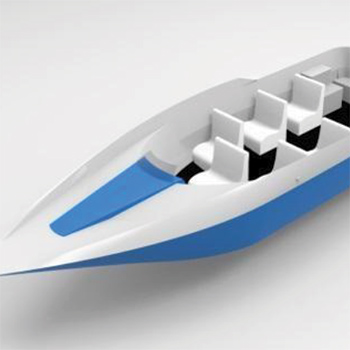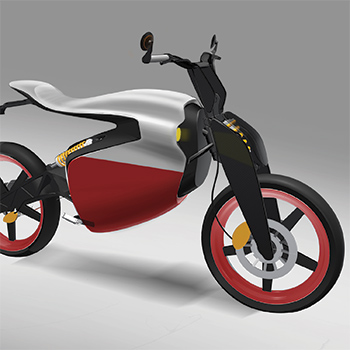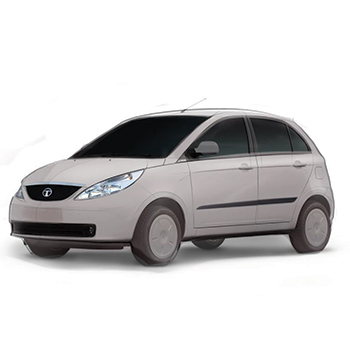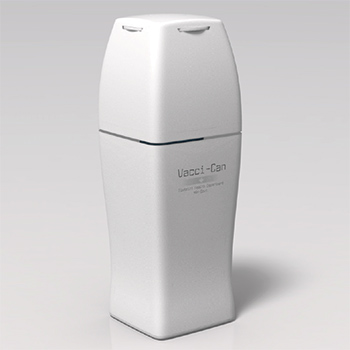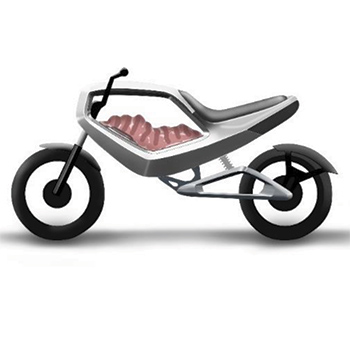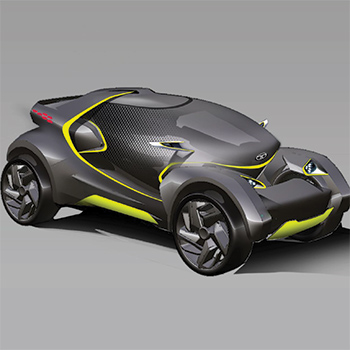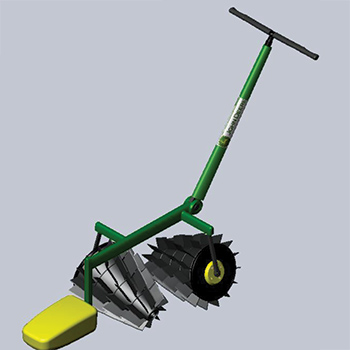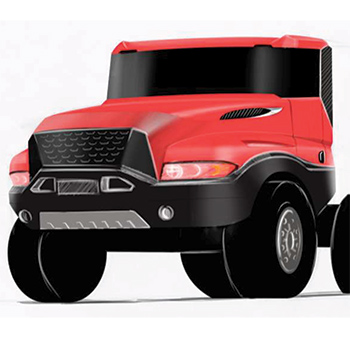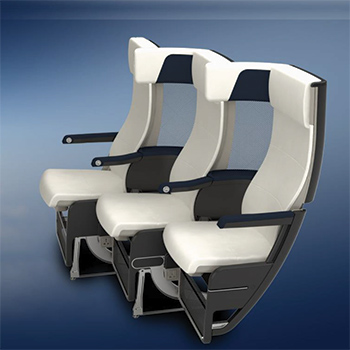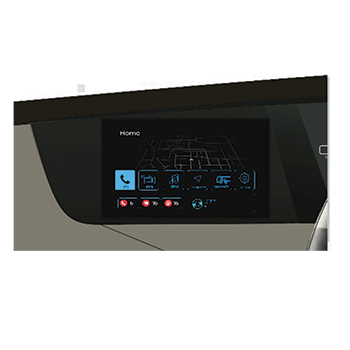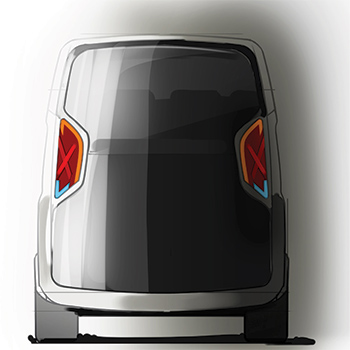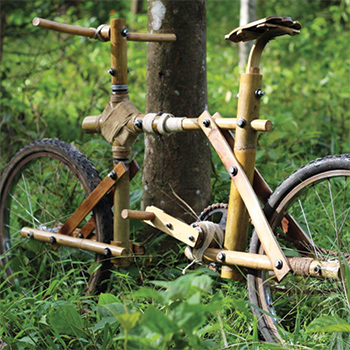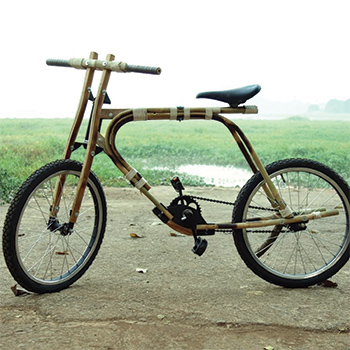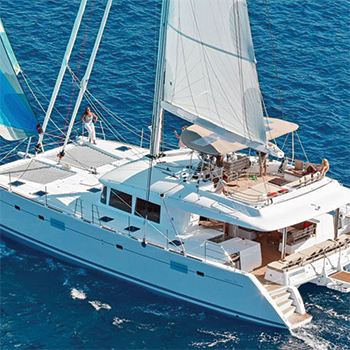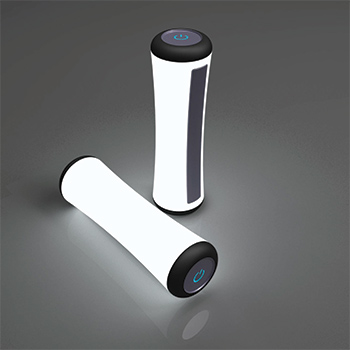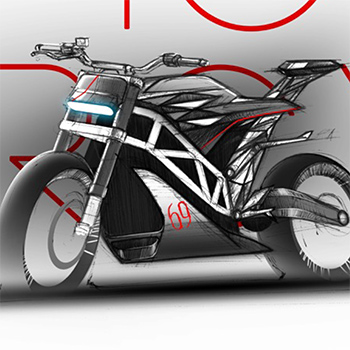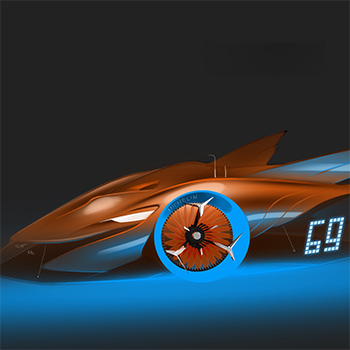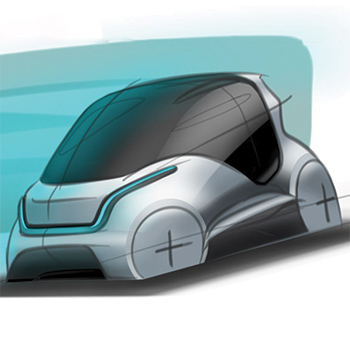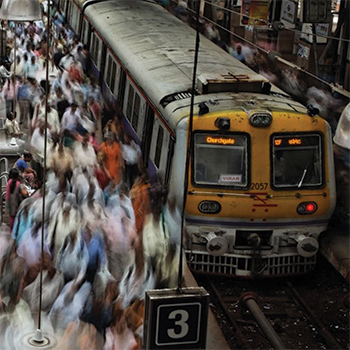Mobility Design
Batch 2014-2016
(36 items)
Mobility DesignBatch 2014-2016
(36 items)
(36 items)
History of Automotive design in India
by Ajithlal C M
by Ajithlal C M
India is one of the biggest automobile market in the world, and it is the world’s fastest growing one also. It comes in as no surprise as India has the second largest population in the world, and a low base of car ownership (25 / 1,000 people) and a growing economy, India has become a huge attraction for car manufacturers around theworld. While automobiles were introduced in India as long ago as 1890’s, the manufacturing started only after 1970. The first mass produced car to be available in Indian roads is Hindustan Ambassador, which is based on 1950 Morris Oxford. Until1980’s, as Premier Automobiles, Tata Motors, Bajaj Auto, Ashok and Standard Motors were the only manufacturers in India. The revolution in the automobile industry started with the introduction of a people’s car from Maruti Udyog, a state owned company. The result was Maruti 800. It became popular because of its low price, high fuel efficiency, reliability and modern features compared to its competition at the time. Tata Motors exported buses and trucks. The liberalization of 1991 opened up India for the global automotive giants like General Motors, Ford, Toyota, Honda, Hyundai and others set up manufacturing plants. The economic growth resulted in high end automobile manufacturers to come to India like Rolls Royce, Bentley and Maybach.
Details >>Redesign of the superstructure of speedboat 'Freedom'
by Ajithlal C M
by Ajithlal C M
The focus of this thesis is to create a new conceptual design for the redesign of the superstructure of the speedboat "Freedom." The speedboat Freedom is the most popular product of Samudra. This product is now 12 years old. It has not received any upgrades. It is losing its market share. Due to the old manufacturing method, it takes 11 days to make one of these. It could be reduced to 5 days if the seats could be integrated into the deck mould. This type of boat is usually primarily focused on aesthetic and practical aspects. However, there are customers requesting performance, which will be the main focus here. A supplementary task is to find ways to apply an engineering approach to the design of a recreational craft in order to help small craft manufacturers optimise their products’ performance. The resulting design is intended to fill the void of large, high-performance superyacht tenders with its lightweight hull and powerful engines. In Samudra, hulls are designed according to naval architect standards. Deck is designed and made in house according to user needs. For large boats, FRP ribs areused as stiffner.They have hull moulds in various sizes and uses them as per customerrequirements. For example they make water taxi with their 7 meter hull, and a force traveler body as a deck mould. So it is possible to use traveler windshield and glasses for the taxi, which is economical.
Details >>Styling of Electric Commuter Motorcycle for Urban Youth
by Ajithlal C M
by Ajithlal C M
India is a young nation. 50% of India,s population are of under 25 years of age. Young people wish to express themselves through the things they own. Especially so in the case of vehicles. Even if India is the second largest motorcycle market in the world, it is dominated by commuter motorcycles. For youngsters who live in urban area, the choice is normally any of the mainstream commuter motorcycles, which is aimed at a larger demographic. The project is about styling an electric urban commuter motorcycle for the youth which reflects their lifestyle. Electric drivetrain is preferred because it allows more form exploration. Interviews with potential customers were conducted in order to obtain their insights. These combined with the pre research led to the formation of the concise design breif : ‘ Styling of an electrically powered commuter motorcycle for the urban youthof India’. A vehicle architecture was chosen after comparing and studying different motorcycles that can possibly fulfil the customer needs. Based on the chosen platform, the space and form arrangements are explored and arrived in a final design is derived after concept explorations and evaluation. The deliverables would be the project report, photorealistic renders of the finalized concept and a 1:3 physical model of the same.
Details >>An entry level Royal Enfield
by Ajithlal C M
by Ajithlal C M
Royal Enfield is motorcycle company which needs no Introduction. It is one of the oldest, if not the oldest motorcycle manufacturers in the world. After moving into India in 1955, RE has managed to make a huge loyalist following due to its old world charm and emphasize on pure motorcycling. This project is about designing an entry level motorcycle for Royal Enfield. The word ‘entry level’ does not mean that it is going to be a cheap commuter motorcycle. It represents accessibility more than affordability. This motorcycle is going to be the stepping stone to the Enfield world for those who are intimidated with the ‘big bike’ feel of Enfield's. The project will consist of studies of brand, market and the user. A scale model, and final renders would be the deliverables.
Details >>Behaviour of Human Eyes in Identifying Cars
by Amol Bhangare
by Amol Bhangare
Automotive styling plays important role in selling of a car or vehicle. How a car looks has always affected its purchase and perception of the brand. Its Visual Perception of an object that creates a desire and makes one opt for ‘whether to have the object or not?’ situation. Automotive visual elements and styling intent is always kept in a way that people can recognize the car, the brand, the model etc. from a distance. Thus studying how eyes see and perceive cars and what are the features that communicate barely enough info to identify a car becomes an important topic. The study may reveal some of the interesting facts about how people see and perceive cars and thus can help in styling.
Details >>Application of TEC (Thermoelectric Cooler)
by Amol Bhangare
by Amol Bhangare
The intention behind this project was to study and analyse Peltier's effect and, based on the insights, create and realise an innovative application for the same. 1. About Peltier The Peltier effect is named after Jean Charles Peltier, who first observed it in 1834. The Peltier effect is a temperature difference created by applying a voltage between two electrodes connected to a sample of semiconductor material. Thermoelectric cooling uses the Peltier effect to create a heat flux at the junction of two different types of materials. A Peltier cooler, heater, or thermoelectric heat pump is a solid-state active heat pump that transfers heat from one side of the device to the other with the consumption of electrical energy, depending on the direction of the current. Such an instrument is also called a Peltier device, a Peltier heat pump, a solid-state refrigerator, or a thermoelectric cooler (TEC). It can be used for either heating or cooling, though cooling is the most common application. It can also be used as a temperature controller that either heats or cools. Typical Product Details TEC1-12706-Cooler-Thermoelectric-Peltier-92Wmax
Details >> • Type number: TEC1-12706;
• Couples: 127;
• Vmax (V): 15.2V I maximum (A): 6A
• Tmax (degrees Celsius): 67
• Dimensions: 40mm x 40mm x 3.7mm
• Max. power consumption: 91.2W
• Ceramic Material: Alumina (Al 2 O 3), Bismuth Tin (BiSn)
• Package Contains: 1 X Thermoelectric Cooler, 5 X Thermal Paste Sachet
Bionics in Mobility Design
by Amol Bhangare
by Amol Bhangare
Nature has been a rich source of inspiration for design field throughout history. Bionic design can serve as a bridge between the modern design and the evolution of nature. Self-sustainability, efficiency, functional integrity and optimized forms are found in nature. Hence there is great potential of exploring the ideas that can help design better solutions in automotive design field.
Details >>Future Autonomous Compact Transport
by Amol Bhangare
by Amol Bhangare
“Future Autonomous Compact Transport” is a P3-level mobility design project (Batch 2014-2016) by Amol Bhangare at IDC, IIT Bombay. It explores the concept of compact, autonomous vehicles—likely focusing on small-scale transport systems designed for future urban mobility. The report investigates how such transport could meet the evolving needs of cities: efficient space use, autonomous navigation, environmental impact, and user convenience. It combines design thinking with mobility engineering principles to imagine how compact autonomous vehicles might be integrated into future transport systems.
Details >>Pottery & Ceramics in Gujarat
by Arjunkumar Bavalia
by Arjunkumar Bavalia
The pottery is can be synonym for birth, creation. In Hindu mythology also there is vast description of pottery. I chosen this topic as my research seminar because it has touched me. Whenever I use to go to some shopping place or malls and entering in any big shop selling beautiful ceramic pots which are very expensive I come up with an applaud and word’-”Wow”. But I also sometimes think about that who created it who is behind it. Why we have limited those pots for decoration purpose only. Why they are so expensive and very limited available. To answer certain questions arouse in my mind I took up interest and did some study from internet, books, travelling to some places in Gujarat, interacted with potters and their family. Tried different clays and got an hands on experience obtained from different places of Gujarat
Details >>Design Improvisation of manually operated conoweeder for paddy field cultivation in Konkan and Goa Region
by Arjunkumar Bavalia
by Arjunkumar Bavalia
This is an internship report on the Design improvisation of manually operated conoweeder for paddy field cultivation in Konkan and Goa region. The project was carried under RuTAG office, IIT Bombay. Our country 2nd largest rice producing country after china and it contributes 21% of world production. Generally in most rice producing region of our country are given highly stessed to follow the System of Rice Intensification (SRI) system. This system is one of the factors which contribute to increase productivity within same area of land. The paddy cultivation require huge water source and labour cost especially for remooving weeds in the field. Under the SRI it is emphasize to use less amount of water and take weed as opportunity for productivity and hence reduce labour cost. In our country in many region like North east and Western Ghats the farmers have small part of land in which they grows rice. In that small part of land it is not worth to invest for labour especially for weeding which take most part of cost of production. Under SRI more emphasize is given by various agricultural research institutes to use conoweeder. There are lot of study is ongoing to make it user friendly especially for women labours in the terms of design, ergonomics, efficiency. Conoweeder is used to uproot weeds and again bury them under the soil. The buried plants increase the biomass of the land and hence productivity increase. It has been observed that in Konkan and Goa region the conoweeder is not giving it output effectively. The project was carried out to understand the problem and to study the related factor with the weeder. The journey starts with market survey in India over telephone along with studying various reports from various Agricultural research institues and university in India. Field visit to NGO situated at Narangi village in Raigarh district of Maharashtra, DBSKKV University, and NGO in Goa have been made. The visit comprises interaction with faculties, research team, NGO staff, and farmers. After considering all the studied and observed factors to come up with ideas and thereafter choose one direction to improvise it. The idea is not to solve the concerned problems in the product but to come up with a form in the product. Give a user friendly appearence touch and feel along with ergonomic factor consideration. The project ends up with a full scale CAD model after finalisation from ideation sketching and a half scale mock up model.
Details >>Restyling of Tata SE ryck cab (Exterior)
by Arjunkumar Bavalia
by Arjunkumar Bavalia
Commercial vehicle is the lifeline of Indian economy. About two-third of goods transportation is handled by commercial vehicle with in the country and across the neighboring country. Commercial vehicle has remarkable contribution in the GDP of country. Commercial vehicle is classified into three major class i.e. light commercial vehicle, medium commercial vehicle and heavy commercial vehicle. Due to reforms by Government, Infrastructure development, mining sector, improvement in roads, hub& spoke model due to urbanization, and golden quadrilateral are main driving factor booming commercial vehicle in India. Especially M& HCV is the most important segment in the range (16 to 25ton) in Indian market. India has become a good market for commercial vehicles among emerging markets (BRIC) compared to triad markets. Most of the company has entered into the Indian market and competing with domestic leading manufacturer. Due to new entrants leading manufacturer’s like TATA, Ashok Leyland market share are decreasing. In Indian most of the domestic manufacturers have continued to sell their trucks in the cowl with chassis only. They have not given importance to the full body importance, aesthetic, essential features, safety, and ergonomics. And now the domestic players are also have started to enter into the international market either by adopting new technology, adding new features, or making JV with foreign players. This project is hypothetical which deals with the restyling of TATA SE truck. The product is chosen for restyling because the product has much potential in the market. The TATA SE is most popular truck still now in every sector like cargo, tipper, defense vehicle, rescue vehicle etc. compared to other models by different manufacturers. But still it requires some change by addition of new essential features, technology, and aesthetic. Which do not only make it sustainable for Indian market but also can increase it demand at International level. This project deals with creating new design language in truck segment for TATA which is exclusively based on styling of exterior cab.
Details >>Dubai City Bus
by Arjunkumar Bavalia
by Arjunkumar Bavalia
When we say Dubai, few things starts to coming in our mind like a dream city, tall buildings, night life, desert, beaches, super cars, luxury hotels etc. And yes it is true that Dubai is one of the city in the world which has shown enormous amount of change within past 45 years which makes it unique in the world. Dubai is the place where the people from various countries comes as tourists or for employment. To cater their need in transportation Dubai is developing towards integrated transportation system which connects Metro to water transport through surface transport. In the surface transport the feeder buses caters the need for integration and connects entire city along with taxi. This project is a hypothetical academic based project to design a city bus for Dubai. It is not just a city bus but it is a city bus for Dubai. The bus should express Dubainess at the end of the day and which make it different from rest of the city buses running in other cities in the world. It is a 24+D city bus. It starts with the understanding about Dubai and find some design attributes for the design and study about few transportation evolution in the world like in aviation, rail etc. Background study of the users is carried out and on that basis persona decided which makes the research more comprehensive. The project phases and deliverable includes exploration,
conceptualization of ideas, final concept rendering, a mock up scale
model of exterior and a scale mockup of typical seating pitch represents
key design aspects.
Details >>History of Aircrafts and Innovations in Aircrafts
by Jinesh P Bhaskaran
by Jinesh P Bhaskaran
The Wright brothers invented and flew the fist airplane in 1903, recognised as "the first sustained and controlled heavier-than-air powered flight. Between 1867 and 1896, the German pioneer of human aviation. The Douglas aircraft company was an American aerospace manufacturer based in Southern California. It was founded in 1921 by Donald Willis Douglas, Sr. and later merged with McDonnell Aircraft in 1967 to from McDonnell Douglas. Douglas aircraft company largely operated as a division of McDonnell Douglas (MD) after the merger. MD later merged with Boeing in 1997.
Details >>Application of TEC (Thermoelectric Cooler)
by Jinesh P Bhaskaran
by Jinesh P Bhaskaran
The intention behind this project was to study and analyze Peltier’s effect and based on the insights, to create and realize an innovative application for the same.
1. About Peltier
The Peltier effect is named after Jean Charles Peltier who first observed it in 1834. The Peltier effect is a temperature difference created by applying a voltage between two electrodes connected to a sample of semiconductor material.Thermoelectric cooling uses the Peltier effect to create a heat flux between the junction of two different types of materials. A Peltier cooler, heater, or thermoelectric heat pump is a solid-state active
heat pump which transfers heat from one side of the device to the other, with consumption of electrical energy, depending on the direction of the current. Such an instrument is also called a Peltier device, Peltier heat pump, solid state refrigerator, or thermoelectric cooler (TEC). It can be used either for heating or for cooling,[1] although in practice the main application is cooling. It can also be used as a temperature controller that either heats or cools.
Typical Product details TEC1-12706-Cooler-Thermoelectric-Peltier-92Wmax
• Type number: TEC1-12706
• Couples: 127
• Vmax (V): 15.2V I max (A): 6A
• Tmax (degree Celsius): 67
• Dimensions: 40mm x 40mm x 3.7mm
• Max. power consumption: 91.2W
• Ceramic Material: Alumina (Al 2 O 3 ), Bismuth Tin (BiSn)
• Package Contains 1 X Thermoelectric Cooler 5 X Thermal Paste
Sachet
Details >>Adaptation of Driver Interface of VOLVO Trucks for India
by Jinesh P Bhaskaran
by Jinesh P Bhaskaran
Trucks play a major role in smooth running of an economy. They are the base of inland freight movement. There are trucks which travel inter continent to supply goods. All perishable goods supply depends on trucks. But trucking in India is not so developed even the freight movement is plenty. Indian truck drivers spent up to a month in a truck cabin during their trips. Even though India is an emerging economy trucking in India is a cottage industry owned by families and poorly treated drivers. they never get amenities to sleep or take rest, there is no air conditioning and sometimes a kerosene stove is a luxury. With entry of brands like Daimler, Volvo, scania etc. into Indian market trucking going to experience drastic changes.
Details >>Styling of Next gen. last mile people carrier
by Jinesh P Bhaskaran
by Jinesh P Bhaskaran
While rapid transit solutions such as light rail, heavy rail, commuter rail, and bus rapid transit (BRT) are popular ways to increase a particular area’s transit network coverage, the fact that they stop only every mile on average to maintain a high average speed means that geographically most of an urban area will be beyond an easy walking distance to a station. The fact that many residences and businesses lay beyond an easy walking distance to a station is known as the “last mile problem”, and is a barrier to better utilization of a rapid transit network. This project is an attempt to comeup with a last mile people carrying solution for coutries leading commercial vehicle manufacturer Ashok Leyland.
Details >>Creating an Online Resource Dataspace on fine examples of Design and Craft in India
by Nikhil Kunnath
by Nikhil Kunnath
Bamboo is a wonder material given to the world by mother nature. It is also known for its capabilities of being the fastest growing biomass. I have been seeing bamboo being used in various art and craft specimens in life till now. Thrikkaipetta is a small village in Kalpetta, Wayanad where bamboo and bamboo craft is being promoted for a long time through an NGO called Uravu. My curiosity towards the material takes me to this village where i find out more about the wonder material and what people can do with this natural fibre. Paintings have its roots so deep in our culture. But her aren't much people who paint over bamboo. Here in Wayanad, there is a group of artisans behind BHAVM, a unit under Uravu and try to find answers to some questions about their art.
Details >>Internship at Uravu Trust. Wayanad, Kerala.
by Nikhil Kunnath
by Nikhil Kunnath
Uravu was established in 1996. Uravu Indigenous Science & Technology Study Centre, commonly known as Uravu, is a not-for-profit bamboo-based developmental organization. Uravu Wayanad is a non-government organisation in Wayanad. It works in coordination with people, governments, and businesses to implement programmes for sustainable employment and income generation in rural areas. It is a charitable trust established under the Indian Trusts Act. It began by promoting bamboo and, as a result, providing employment to marginalised social groups through crafts. They provide skill training in bamboo processing, establish micro enterprises; marketing of bamboo handicrafts; cultivate bamboo; and promotion of eco-tourism.
Details >>Bamboo Bicycle for Children
by Nikhil Kunnath
by Nikhil Kunnath
Bicycles have been in use around the globe for a long time now. They probably are the most affordable means of personal transportation available to mankind. Despite being so, the growth in number of people owning one is very less when compared to other motorized means of transportation like cars, bikes & scooters. One major cause for the slow growth rate is the rise in price in the recent years due to various supply chain issues. But despite the rise in price there still is a slow consistently growing demand for bicycles in the country both in urban and rural environments. Children being one of the major reasons for that demand. Bicycles are one of the most prized possessions a child can have which helps in their personal transport. The joy and thrill of motion is one fascinating gift which the bicycle promises. And children try to get them whenever a chance comes. The current bicycle industry is addressing the growing needs of the people in production numbers. But with more production numbers comes more unused & unprocessed wastage depositing up. These deposits will remain untouched in the environment for years as we experience it now, unless proper processing units come.
Details >>Design of Law Enforcement Drone
by Nikhil Kunnath
by Nikhil Kunnath
For things to run smoothly in a country the government makes law and orders. But ensuring that the things are in order is a tough job. All humans have personal goals and agenda and there is always a possibility for clash of agendas which leads to problems. Hence the police force has been given the task to maintain Law and order in the country. To ensure that the task assigned to them is done, the police have to be in the run looking out for the good and the bad happening in their domain. To get that job done, transportation plays an important role and the vehicles in use must have the capabilities to aid the cops in doing so. This project looks into the vehicles which our police forces use and analyze the purpose for which they are used, to make appropriate design interventions so that the job of the cops are made better. A police officer should be a respectable personality in the community. And so do the vehicles which they use.
Details >>Water Transportation
by Pankaj Kuli
by Pankaj Kuli
• Water transport is the cheapest and the oldest mode of transport. It operates on a natural track and hence does not require huge capital investment in the construction and maintenance of its track except in case of canals. • The cost of operation of water transport is also very less. It has the largest carrying capacity and is most suitable for carrying bulky goods over long distances. • It has played a very significant role in bringing different parts of the world closer and is indispensable to foreign trade
Details >>Photovoltaic Products
by Pankaj Kuli
by Pankaj Kuli
Photovoltaics (PV) is the name of a method of converting solar energy into direct current electricity using semiconducting materials that exhibit the photovoltaic effect, a phenomenon commonly studied in physics, photochemistry and electrochemistry. An organic solar cell or plastic solar cell is a type of
polymer solar cell that uses organic electronics, a branch of
electronics that deals with conductive organic polymers or
small organic molecules, for light absorption and charge
transport to produce electricity from sunlight by
the photovoltaic effect.
Details >>Bionics in Mobility Design
by Pankaj Kuli
by Pankaj Kuli
Design inspired by nature, bionic design, biomimetic, biomimicry, or biologically inspired design have been a source of inspiration for design activities for a long time. Design endeavors in several technical disciplines may lead to groundbreaking new concepts when natural systems are considered as a source of inspiration. Despite the success attained in several cases from the use of this approach in design, the bio-inspired design approach may still have room for improvement, in order to become more systematic.
Details >>Sports car for Le Mans 2030
by Pankaj Kuli
by Pankaj Kuli
There is nothing like the Le Mans 24 Hours. The world’s greatest race has always been more than the pure pursuit of speed. Le Mans is the ultimate test of ideas, innovations, endurance, creativity and beauty. In recent years, Le Mans organizers have pushed for significant reductions in fuel, energy and tire usage. The open formulas available to achieve those results have made Le Mans the most relevant and exciting form of competition for manufacturers worldwide. This design project started out of my passion towards sports cars and race cars
Details >>Pros & Cons of Autonomous Vehicle
by Rishi Soman
by Rishi Soman
This report explores the positive and negative impact of autonomous vehicles on transportation systems and it’s effects on human lifestyle.
Details >>Concept Electric Bike for Tork Motors
by Rishi Soman
by Rishi Soman
This high performance electric street bike is proposed to be the flagship product for Tork Motors. A prototype of this concept would be built to be used as a proof of concept and to invite potential investors
Details >>Restyling the BAJAJ CHETAK
by Rishi Soman
by Rishi Soman
The Chetak brand was killed and hence it has not been imagined comprehensively restyled while the Vespa has come a long way in terms of styling and product. Hence, a restyling of Chetak makes sense. 1.2 Scope of the project Advancement in technology and materials mean newer and more efficient forms can be designed. Compact, newer IC engine drivetrains or even electric drivetrain can give much more freedom in design and packaging of the restyled vehicle. A new and contemporary interpretation of the classic design could give new character to the Chetak. Original Chetak had more of a work horse like character. Almost exclusively ridden my men, it reflected the strong patriarchal society of 80s & 90s India. The new design is ought to be a unisex design appealing both to men and women. Restyle will be challenging as the new design should respect the nostalgic values of the Chetak and also should be different from the current Vespa lineup.
Details >>Design of a race car for LE MANS 2030
by Rishi Soman
by Rishi Soman
Michelin North America, Inc. hosts the annual Michelin Challenge Design to support creative thinking and innovation in vehicle design. Michelin challenges the international design community, individuals, small and large companies and universities, to enthusiastically create innovative and aesthetically pleasing design solutions that will meet the theme requirements of the Michelin Challenge Design 2017. [1] 1.1 Challenge for 2017 The challenge for 2017 is “Le Mans 2030: Design for the win” Michelin encourages creative individuals to create a breakthrough race car to win the Le Mans 24 Hours in the year 2030. Entrants are encouraged to utilise future-looking technologies, innovations, and pioneering problem solving skills to design a car that reinforces the premium brand image of a company that is either famous for its historical successes, or ready to elevate its brand through a Le Mans 24 Hours win. 1.2 Aim of the project The aim of the project to is propose a competitive, winnable concept for the Michelin Challenge Design. The final proposal should be innovative in it’s use of technology and aesthetically pleasing in order to win the competition. 1.3 Scope of the project Designing a race car for Le Mans relevant to the year 2030, involves study of future technologies and process of the human civilisation. Le Mans being a prestigious endurance race, the study of it’s legacy should help extrapolate the future racing scenario. The project would embark on a futurist, conceptual journey, trying to understand the future of mankind.
Details >>Visual Analysis of Hand Painted Lettering in Tamil
by Rohit Kartha
by Rohit Kartha
Hand painted street murals have been around for decades and are still found in and around the city of Chennai. Like Kollywood, Marine beach, sambaar vada and filter coffee hand painted tamil typa has become an integral part of the culture of Chennai. This project focuses on documenting analysing and categorising various types of hand painted murals.
Details >>Kerala Boat Design Project
by Rohit Kartha
by Rohit Kartha
Alappuzha, also known as Alleppey, is the administrative headquarters of Alappuzha District in the south Indian state of Kerala. Alappuzha is the sixth largest city in Kerala with an urban population of 177,029. The different types of traditional Kerala boats found in the waters of Alappuzha can be broadly classified into these categories: kettu vallam (sewn boats), Shikara, house boats, large house boats, luxury house boats, small boats, Chundan Vallam (beaked boat), etc. The boats are made of natural products like bamboo, coir, and anjili tree wood, with cashew oil being used to waterproof the wood.
Details >>Urban Personal Transportation for India
by Rohit Kartha
by Rohit Kartha
India is said to overtake china’s population by the year 2022, according to a study done by the United Nations. This not only means an overall growth of urban areas around the country but the expansion of existing urban areas. The city of Mumbai is currently the most densely populated city in the world and three out of 10 of the densest cities by population happen to be in India. With an urban population set to rise by more than 400 million people to 814 million by 2050, India faces the kind of mass urbanisation only seen before in China, and many of its biggest cities are already bursting at the seams. In such a setting of dense urban metropolises, transportation and transport networks form the lifeline of the system without which a gridlock is inevitable. This project will focus on understanding the needs of a modern day urban commuter in Mumbai and try to suggest a vehicle concept for urban personal mobility.
Details >>Luxury Yacht Inspired from Traditional Kerala Boats
by Rohit Kartha
by Rohit Kartha
This project deals with the design of a luxury yatch inspired from traditional Kerala boats and Kerala culture and aesthetic. The yatch is intended to usher in a new era to Kerala tourism which will equipped to handle tourists expecting very high standarads of luxury yet want to be immersed in the experience that is Kerala. The project will follow the design process of identifying a market segment, a potential user, and the need for such a product. Research into tourism trends and papers on expectations and satisfaction of tourists and the essential factors of luxury hospitality will be studied. The desiagn brief will streamline the process in conceptualizing a yatch with interiors and an exterior inspired by Kerala aesthetics. The proposed design will be a culmination of various factors, studies and interactive concepts that does justice to the brief.
Details >>Situation of Mumbai Public Transport
by Shreyas Ganesh Barve
by Shreyas Ganesh Barve
In this study I looked at existing situation of public transport in Mumbai city. There are many factors which influences the public transport in Mumbai. It is very important to understand these key players which are affecting the public transport in Mumbai , to understand the route causes of the same. The city is said to be on the limit of its saturation. All the resources including water, land, train etc. are at their limits. The number of vehicles on road is putting the stress on the road network and eventually on the public transport.
Details >>Design of Handle Bar for Tricycle
by Shreyas Ganesh Barve
by Shreyas Ganesh Barve
With the use of three wheels, balancing is not required, but on the other hand, three wheels create more frictional force that the user has to overcome. Background Study Due to increased friction, the effort required to move the vehicle from a speed of zero is difficult with the existing cycling system. In the existing cycling motion, users apply pull force with one hand and push with the other. The same system in a tricycle can create some problems which can be associated with handling the vehicle, as the same hands used for handling are supposed to apply forces in opposite directions. Tricycles are the ideal and most frugal mobility solution for paraplegics in our country. It is provided with all controls easily accessible to paraplegic users. Tricycle is the ideal and most frugal mobility solution for paraplegics in our country. It is provided with all controls easily accessible to paraplegic users. Users use their hands to power the vehicle, maneuver the vehicle and to control other accessories like gears, brakes
Details >>Restyling of Tata Winger
by Shreyas Ganesh Barve
by Shreyas Ganesh Barve
The small commercial vehicle (SCV) is the largest segment within the Commercial Vehicle (CV) segment with 60 % of sales. SCV segment is dominating the commercial vehicle market which will account for 80 % of market share. The advantage of SCV is their versatility. These vehicles can only handle loads up to 2-3 tons but reach of these vehicles is impressive. Currently Tata Motors and Mahindra and Mahindra are the biggest player in this segment. The types of vehicles available are mini trucks and pick-ups. The use of commercial vans also known as transit vans in India is very limited in goods transport. Commercial vans are type of vehicles which can provide good comfort to the user and better product quality .This project deals with restyling the existing Tata Winger as a small commercial vehicle. The current Tata winger is based on Renault Traffic MK1 model ( 1995-2001). The Renault traffic was upgraded twice afterwards. Existing Tata winger follows design language commonly used in late 90s. So there is a need to upgrade the existing design of the Tata winger so that it follows current trends and design language of Tata motors. The expectations of user were briefly understood with the help of user study and study of reports depicting current situation of Indian commercial vehicle segment. The user study was useful in identifying the test of the user and its expectation from a commercial vehicle. As per the research the brief was set up to restyle the existing Tata Winger as a goods carrier with upgraded design following the design language of the Tata. Various design directions were explored to suite the test of the user. While exploring , rugged and Quintessentially simple are the keywords considered.
Details >>Race car Design for Le Mans
by Shreyas Ganesh Barve
by Shreyas Ganesh Barve
The competition started in the year 1923 at the Le Mans Race Circuit, France. The purpose of the event has always been to provide a platform for the car manufacturers to test their innovations in actual conditions. It also gave the opportunity for small-scale car manufacturers to show off their inventions and designs. Circuit de la Sarthe, also known as the 24 Heurus Circuit. It is a semi-permanent race track, consisting of local roads which remain open to normal traffic during most of the year.
Details >>
